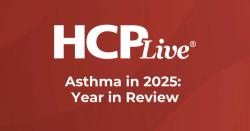
OR WAIT null SECS
Healthcare, Pharmacy Costs Lower for Oral Treprostinil Than Oral Selexipag
Investigators propose oral treprostinil be considered when treating patients with pulmonary arterial hypertension.
A new study presented this week at the CHEST 2021 Annual Meeting considered the cost differences of oral treprostinil and oral selexipag, as well as the health outcomes associated with year-long treatment of patients with pulmonary arterial hypertension (PAH).
The session, “Health Outcomes and Costs Associated with Oral Treprostinil and Selexipag One Year Into Treatment: A United States Claims Databases Analysis in Patients with Pulmonary Arterial Hypertension” was led study author Bonnie B. Dean, PhD, University of Wollongong, Australia.
In the study, the investigators noted that previous comparisons of oral Treprostinil and selexipag had been made, yet real-world data had been limited to short duration follow-up periods or estimated healthcare costs through models.
With the newest analysis, Dean and colleagues characterized a myriad of outcomes and direct healthcare costs for patients with pulmonary arterial hypertension who were being treated with either treprostinil or selexipag for 1 year.
The Methods
The investigators engaged in a restrospective analysis from January 2014 to June 2019.
During that time, a total of 275 patients were enrolled in the study before being randomized into the treprostinil or selixipag cohort. A total of 120 patients were enrolled in the Treprostinil cohort, while 155 patients met the inclusion criteria for the selexipag group.
Patients were 18 years or older and were required to have a PAH inpatient or outpatient medical claim identified by International Classification of Disease Codes.
In the study, adherence was defined as having a medication possession ratio (MPR) of 80% or greater, while persistence was defined by continuous therapy in the 1-year follow-up period without a medication gap for 60 days or more.
The Findings
Dean and investigators reported that concomitant therapies for PAH received during the pre-index period were generally similar between the 2 cohorts.
However, more patients in the Treprostinil group transitioned from the parental PAH treatment as opposed to the selexipag group (11.7% vs. 2.6%, p=0.003).
In the 1-year following treatment, adherence and persistence were comparable between the 2 medication groups, with adherence being 83% for Treprostinil and 81% for selexipag, and persistence being 53% for the former and 59% for the latter.
Classi and colleagues also reported that among the patients persistently on therapy at the 1-year point of the study, the median annual pharmacy costs were $232,071 for selexipag and $107,511 for treprostinil (p<0.01).
The findings indicated a 116% higher median annual cost for selexipag.
After adjusting for baseline differences recorded between the 2 cohorts, the total mean PAH-related healthcare costs in the 1-year follow-up period were $350,782 for selexipag compared to $229,564 for treprostinil (p<0.05).
“Cost differences between treprostinil and selexipag should be considered when selecting oral prostacyclin therapies given the broader economic impact on the US healthcare system as well as potential costs specific to health insurers, pharmacy-benefit managers, employers, and patients,” the team wrote.


